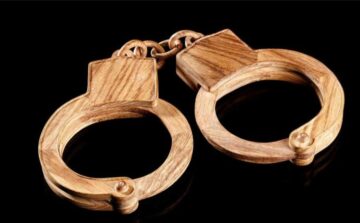
Originally published by The Voice of San Francisco in July 2024
Material Matters at the Haines Gallery
Eight artists who share an unconventional use of materials will be a part of a group exhibition at the Haines Gallery. Material Matters features the works of Ai Weiwei, Matthew Brandt, Deborah Butterfield, Linda Connor, Stuart Robertson, Leslie Shows, David Simpson and Zhan Wang. Each artist’s unique approach reflects their particular concerns and expands the boundaries of form and genre.
Material and its Message
Ai Weiwei has become an international phenomenon with his sociopolitical art that shines a light on social injustice. Born in China in 1957, he is an outspoken champion of human rights, and his activism has made him a natural target for Chinese authorities who have attempted to censor the artist and his output. Despite these obstacles, Ai Weiwei continues to turn activism and adversity into art. Material Matters include Handcuffs (2012), a sculpture precisely carved from a wood traditionally reserved for classical Chinese furniture. The work is informed by the artist’s personal story, created shortly after his detention by Chinese authorities, and suggests notions of freedom, censorship, and human dignity. It also suggests personal power. Since wood is pliable and not as strong as steel, the handcuffs possess a fragility that suggests our bonds can be broken with determination. The role of the individual is always a role of power in the work of Ai Weiwei. The artist explains: “I call on people to be ‘obsessed citizens’, forever questioning and asking for accountability. That’s the only chance we have today of a healthy and happy life.”
The Environment
Matthew Brandt lives and works in Los Angeles, CA and innovates photographic methods that create direct dialogue between subject matter and material. As a part of his ongoing Carbon series, this show features Vatnajökull MCY21, 2018-20. Named after Europe’s largest glacier, Brandt’s prints of this glacier in Iceland are subject to fire and heat resulting in blistered, technicolor images of a landscape imperiled by rising temperatures. Brandt often incorporates physical elements from the sites of his photographs to tell a story. San Francisco Bay Area artist Linda Connor’s photographs demonstrate a longstanding interest between systems of belief and the natural world. Tomb Doorway, Petra, Jordan, 1995 is comprised of Archival Print on silk, printed in 2012. The rock-cut doorway printed on a silk panel evokes tapestries and religious hangings such as liturgical banners.
Illusion and Reality
Sculptor Deborah Butterfield’s Two Seas, environmental allegory combining the natural and manmade: driftwood, the remnants of a plastic buoy and floatation devices, and a trail of netting. These objects were collected from the Iceland Sea and the Pacific, hence its name. Stuart Robertson’s creations use items which include aluminum, textiles, glitter, bubble wrap, and sawdust. Creating closely cropped portraits of friends and family, the figures and the textures that form their features offer unusual interactions with images of Blackness and reject distortion, misrepresentation and erasure. In Pure Vibes, Jerri B., 2024, the main subject, Jerri B., is represented by aluminum. Aluminum- the largest export of Robertson’s native Jamaica, associated at once with capital, consumption, extraction and exploitation—embodies luster and armor in his metallic-skinned portraits. Natural forms like sand and rust and the flow of thought drive and provoke the art of Leslie Shows. Her collage painting Aster’s Tongue, 2022 is made from layered imagery of glass, ink and aluminum. Sand, acrylic, aluminum and ink merge in Show’s Formatrix (2020), the resulting purple and earth toned surface reminiscent of abstract expressionist paintings. David Simpson’s signature Interference paintings are created from and named for interference pigments, an acrylic paint containing mica-coated particles that interact and refract light. The minimalist-influenced works shift and shimmer as they respond to light and the presence and point of view of the audience. Things are not what they seem in Shan Wang’s Artificial Rock #148, 2007. Urbanization and an increasing dislocation from nature reflect in the mirrored surface of the reinterpreted scholar’s rock. This particular scholar’s rock-craggy creviced stones prized and collected by Chinese literati- isn’t a rock at all, as the title lets us know. Like Rene Magritte’s famous painting The Treachery of Images 1928-29, the artist lets us know that a representational image isn’t the same as the object it depicts. Magritte’s message is writ large on the canvas in French, Ceci n’est pas une pipe, or “This is not a pipe.” Wang’s sculpture is removed from nature as humanity drifts from the natural world over time.
Material Matters takes the known and rewrites our shared reality into a new chain of associations and includes the public in this ongoing dialogue of creativity. Material Matters is on view from July 19 to August 31, 2024.